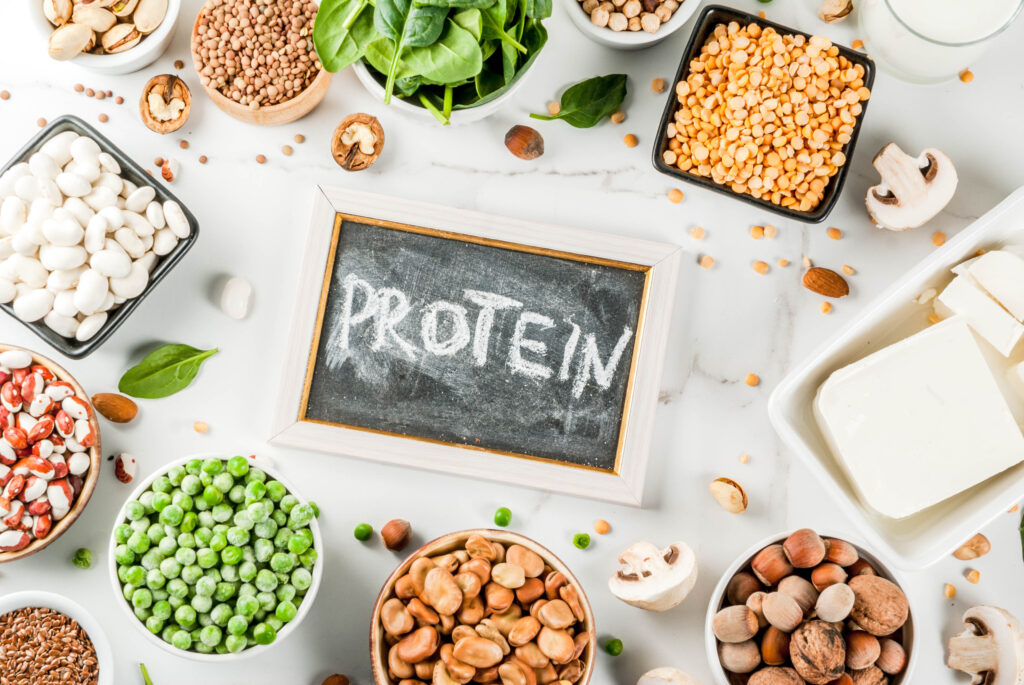Improving Your Metabolism After 50: Try These Proven Strategies

As we age, maintaining a healthy metabolism becomes increasingly challenging. Metabolism—the process by which our bodies convert food into energy—naturally slows down over time, particularly after 50. This slowdown can contribute to weight gain, decreased energy levels, and even a loss of muscle mass.
However, understanding how to improve metabolism after 50 is crucial for preserving energy, strength, and overall health. The good news is that there are proven strategies you can implement to give your metabolism the boost it needs, even as you age.
Discover why metabolism slows down after 50 and, more importantly, how you can counteract these changes with targeted lifestyle adjustments.
Why does the metabolism slow down after 50?
Several factors contribute to a slower metabolism as we age. Some of these changes are natural and unavoidable, but others can be managed with the right approach.
You experience muscle loss
One of the biggest contributors to a slowed metabolism after 50 is muscle loss, also known as sarcopenia. From your 30s, you can lose up to three to five per cent of muscle mass per decade, with this decline accelerating after 50. Since muscle burns more calories than fat—even at rest—having less muscle means you burn fewer calories throughout the day.
Your hormones change
As we age, hormonal changes also come into play. For women, menopause leads to a drop in oestrogen levels, which can contribute to fat gain, particularly around the midsection. For men, testosterone levels decline, affecting muscle mass and fat distribution. These hormonal shifts slow down metabolism and make it harder to maintain a healthy weight.
You become less active
Another factor is reduced physical activity. Many people become less active as they age due to lifestyle changes, health concerns, or simply a lack of motivation. Less movement means fewer calories burned and a slower overall metabolic rate.
Understanding why metabolism slows down after 50 is essential to implementing the right strategies to combat this decline. Now, let’s look at some proven ways to improve your metabolism.

The role of muscle in metabolism
Muscle plays a critical role in maintaining a healthy metabolism. The more muscle you have, the higher your metabolic rate, which means you burn more calories, even when you’re not actively exercising. After 50, the natural decline in muscle mass is one of the main reasons for a slower metabolism.
Muscle loss and ageing
As mentioned, after 50, muscle loss accelerates, leading to decreased strength, mobility, and calorie-burning capacity. This decline makes it easier to gain weight and harder to lose it, even if you’re eating the same amount of food as before. Preserving and building muscle is key to improving your metabolism.
Strength training: the best solution
Strength training is one of the most effective ways to maintain and even increase muscle mass as you age. Whether it’s lifting weights, doing bodyweight exercises like squats and push-ups, or using resistance bands, strength training helps boost metabolism by building and preserving muscle.
Aim for two to three strength-training sessions per week, focusing on major muscle groups such as the legs, back, and chest. Not only will this help you maintain your metabolism, but it will also improve your overall strength and mobility.

Proven strategies to improve metabolism after 50
Improving metabolism after 50 is all about making targeted changes to your exercise, diet, and lifestyle. Here are some proven strategies to help you rev up your metabolic engine.
1. Strength training and resistance exercise
As we discussed, strength training is vital for boosting metabolism. Resistance exercises like weight lifting, resistance band workouts, or even bodyweight exercises such as lunges and push-ups help preserve muscle mass, which is essential for maintaining a higher metabolic rate.
For those over 50, focus on exercises that work multiple muscle groups at once, such as squats, deadlifts, and push-ups. If you’re new to strength training, start with light weights and gradually increase as you get stronger.
2. High-intensity interval training (HIIT)
Another effective way to improve metabolism after 50 is through high-intensity interval training (HIIT). HIIT involves short bursts of intense exercise followed by brief periods of rest or lower-intensity exercise. This type of workout has been shown to increase metabolic rate for hours after exercise, meaning you continue to burn calories long after your workout is over.
For those over 50, low-impact HIIT options like swimming, cycling, or brisk walking with short sprints are great choices. You don’t have to do long, intense workouts—a 20-minute HIIT session can be just as effective.

3. Diet adjustments for metabolic health
What you eat plays a significant role in how efficiently your metabolism functions, especially after 50.
- Protein-rich foods: As you age, your body needs more protein to maintain and repair muscle tissue. Incorporate protein-rich foods like lean meats, eggs, fish, beans, and Greek yoghurt into your meals. Protein not only supports muscle health but also has a higher thermic effect, meaning it requires more energy (calories) to digest compared to fats or carbohydrates.
- Anti-inflammatory foods: Chronic inflammation can slow down your metabolism and make it harder to lose weight. Including anti-inflammatory foods like leafy greens, berries, nuts, fatty fish (such as salmon), and olive oil can support metabolic health and reduce inflammation.
4. Increase daily activity levels
In addition to structured exercise, increasing your daily activity levels can significantly impact your metabolism. Activities like walking, gardening, cleaning, and even fidgeting fall under non-exercise activity thermogenesis (NEAT), which refers to the calories burned during everyday movements.
Here are some simple ways to stay active throughout the day:
- Take short walks after meals.
- Stand up and stretch every hour if you work at a desk.
- Incorporate light housework or gardening into your routine.
These small efforts can add up and help keep your metabolism functioning efficiently.
5. Adequate sleep and stress management
Getting enough sleep is crucial for maintaining a healthy metabolism. Lack of sleep can lead to hormonal imbalances, including increased cortisol (the stress hormone), which slows down metabolism and increases appetite.
Aim for 7-8 hours of quality sleep each night to support your metabolic health. In addition, practice stress management techniques such as yoga, meditation, or deep breathing exercises to reduce cortisol levels and support a healthy metabolic rate.
6. Stay hydrated
Staying hydrated is another simple yet effective way to improve your metabolism. Water is essential for the body’s energy production processes, and even mild dehydration can slow down your metabolic rate. Drinking water before meals has also been shown to increase calorie burn by temporarily boosting metabolism.
Aim for at least eight glasses of water per day, and more if you’re active.

Hormonal considerations after 50
As you age, hormonal changes can significantly impact your metabolism. For women, menopause leads to a drop in oestrogen levels, which can cause weight gain and metabolic slowdowns. Men experience a gradual decline in testosterone, which affects muscle mass and fat distribution.
Managing hormones naturally
Balancing hormones through lifestyle changes can help mitigate some of the metabolic challenges of ageing. Strength training, proper nutrition (especially protein), and getting enough sleep can all support hormonal health and metabolism. In some cases, hormone replacement therapy (HRT) may be an option, but it’s essential to consult with a healthcare provider to determine what’s best for you.
Supplements to boost metabolism
While lifestyle changes are the cornerstone of boosting metabolism after 50, certain supplements may provide additional support. However, supplements should never be a substitute for healthy habits. Here are a few that may help:
- Vitamin D: Many people, especially those over 50, are deficient in vitamin D, which plays a role in muscle function and metabolism.
- Omega-3 fatty acids: Found in fish oil supplements, omega-3s help reduce inflammation and support overall metabolic health.
- Magnesium: This mineral is essential for energy production and can help regulate blood sugar levels, both of which are important for metabolism.
Always consult with a healthcare provider before starting any supplement regimen to ensure it’s safe and appropriate for you.
Long-term lifestyle changes for sustained metabolic health
Improving metabolism after 50 isn’t about quick fixes—it’s about creating sustainable habits that will support your health for the long term. Here’s how you can make these strategies part of your daily life:
- Exercise regularly: Commit to a balanced routine that includes strength training, cardio, and flexibility work.
- Eat a balanced diet: Focus on whole foods, plenty of protein, and anti-inflammatory ingredients.
- Stay active throughout the day: Small movements add up, so find ways to incorporate more activity into your daily routine.
Prioritise sleep and stress management: These are often overlooked but critical for maintaining a healthy metabolism.
The bottom line
As we age, our metabolism naturally slows down due to muscle loss, hormonal changes, and decreased activity levels. However, improving metabolism after 50 is entirely possible with the right strategies. Incorporating strength training, HIIT workouts, a protein-rich diet, and healthy daily habits can help maintain and even boost your metabolic rate.
Remember, it’s all about consistency. By adopting these proven lifestyle changes and sticking with them, you can keep your metabolism running smoothly and support your long-term health goals.





